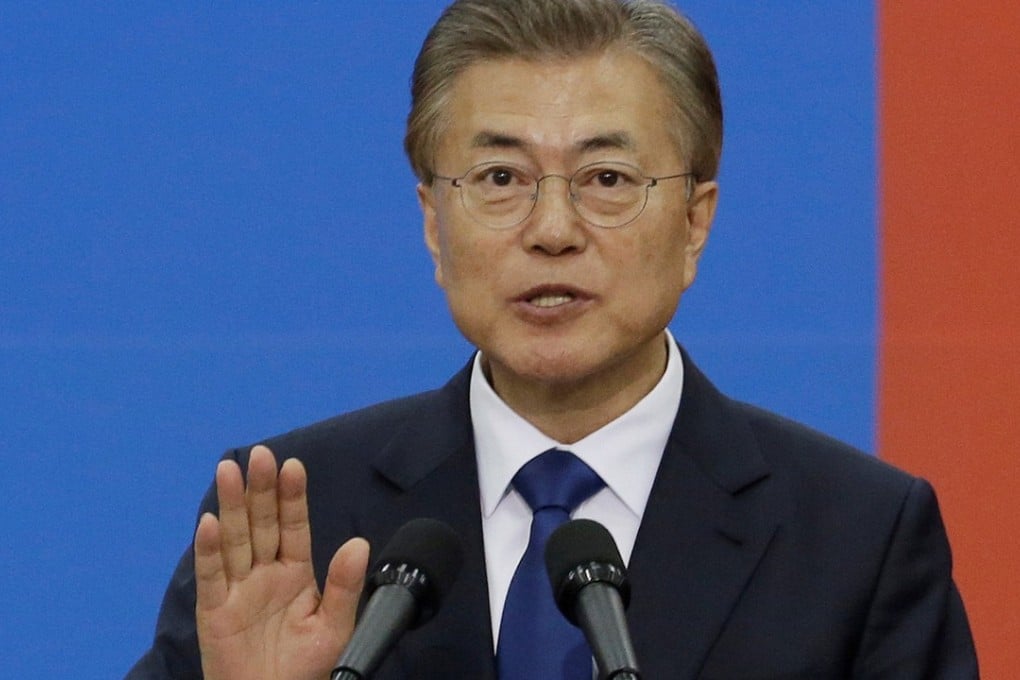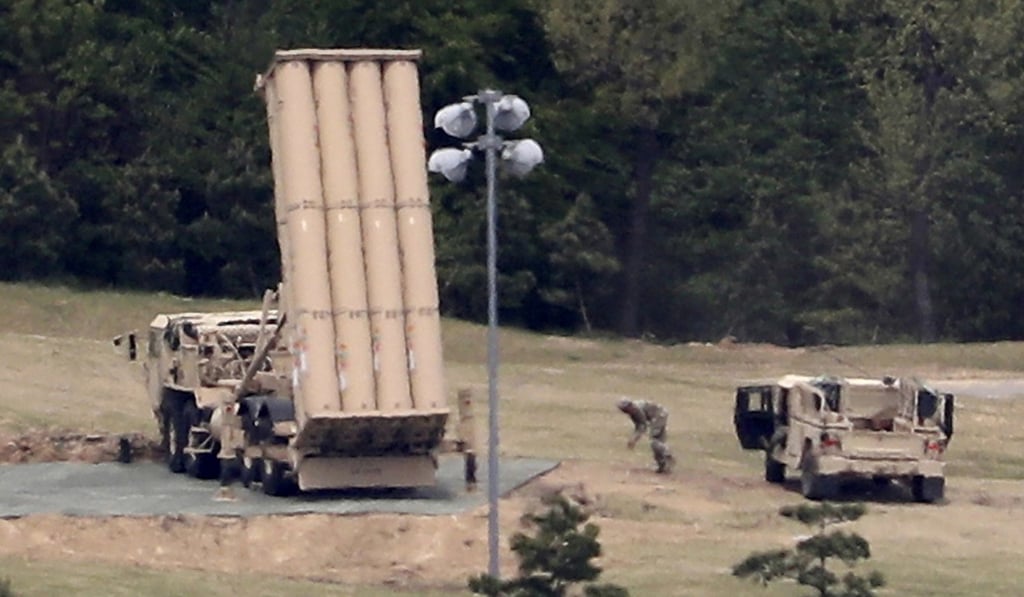Is South Korea’s Moon Jae-in bluffing over THAAD to keep China happy?
Sceptics find it hard to believe the president is really ‘shocked’ at the arrival of more parts for the US missile system; they say he’s either playing to China and North Korea, or preparing to withdraw it

South Korean President Moon Jae-in may have expressed shock this week that more THAAD components had already arrived in the country, but critics say he is simply putting on a show for Beijing and Pyongyang.
Beijing has been levying unofficial sanctions on South Korea ever since Seoul’s decision last July to deploy the US antiballistic missile system, known in full as the Terminal High Area Altitude Defence. Beijing opposes the system’s deployment in South Korea because it fears its powerful radar could be used by the United States to spy on China.
“We have no choice but to see this as the United States targeting China,” Guo Rui, international relations expert at Jilin University, said on May 31 at a Korea-China peace forum on the Korean island of Jeju. “THAAD is pulling China and Korea apart.”
From North Korea to THAAD: What Moon Jae-in’s victory means for South Korea
Moon’s statement is in line with recent attempts by Seoul to improve relations with Pyongyang, which critics say have been too conciliatory. On May 29, North Korea conducted its ninth missile test this year and third test since Moon took office, but Moon did not attend the National Security Council meeting the following day. Instead, he called Japanese Prime Minister Shinzo Abe to say dialogue was still possible with North Korea, then expressed his dismay at the arrival of the THAAD components. According to the US and Seoul, THAAD has been deployed in the South to counter potential North Korean missile attacks.

Yoon Young-chan, head of the National Security Agency, gave a briefing on May 30 in which he said Moon was “very shocked” to learn that, in addition to the two operational THAAD launchers in Seongju, North Gyeongsang, four more had already been brought into the country. Yoon added that Moon had instructed the government to investigate the matter and determine whether the four launchers were actually brought in and why this information was not disclosed to the public.
THAAD is manufactured by the US company Lockheed Martin. One THAAD battery consists of an AN/TPY-2 radar, which is used to detect incoming ballistic missiles, 48 missiles, which are used to knock targets out of the air with kinetic rather than explosive energy, and six launcher vehicles, used to transport and fire the missiles.
China’s beef with Korea: the link between halal food and THAAD
